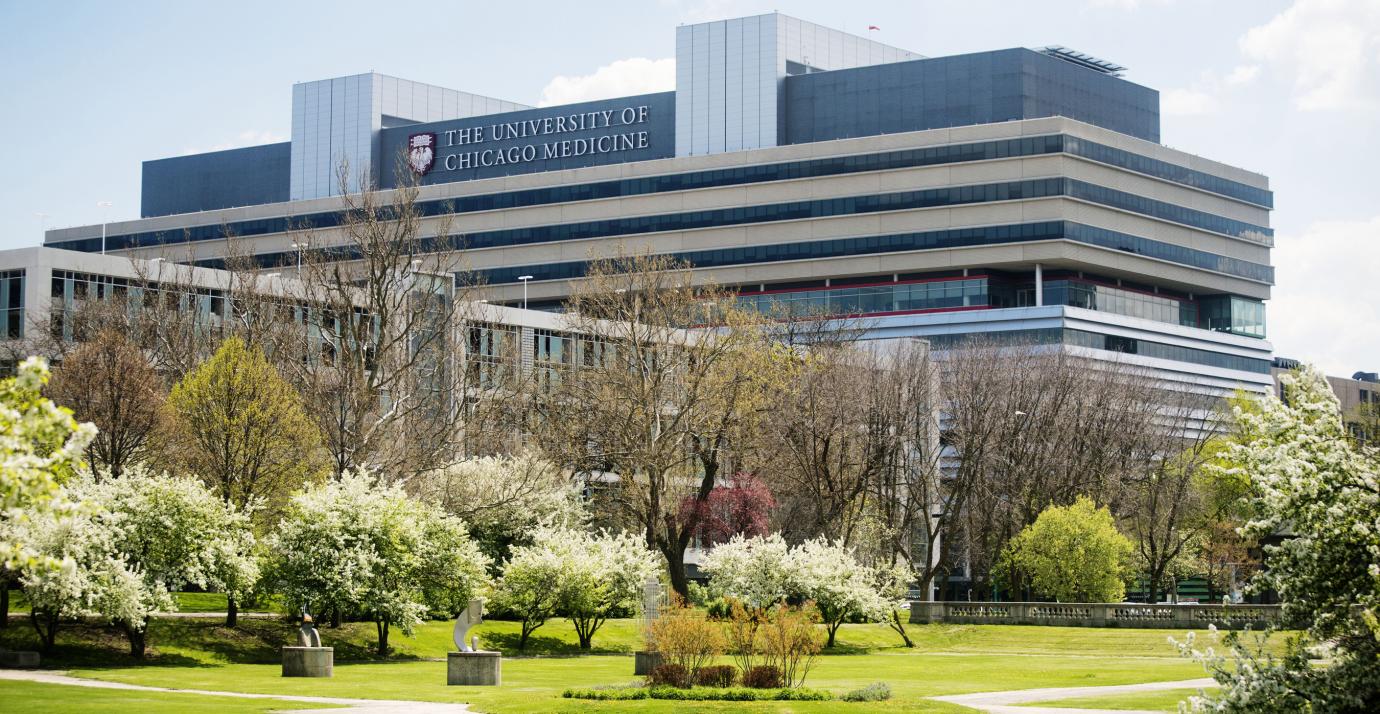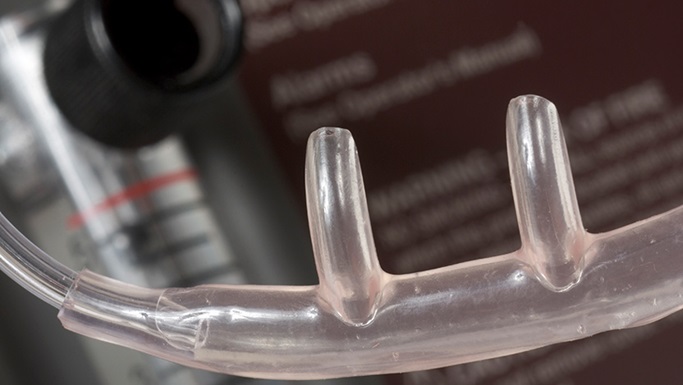April 27, 2020 I Jola Glotzer
“Prevent the vent”
The UChicago Medicine doctors’ mantra — “prevent the vent” — appears to be working surprisingly well: Using a non-invasive method to provide oxygen helped 40% of COVID-19 patients avoid mechanical ventilation

The University of Chicago Medicine. Source: UChicago News. Photo by: Michael Satalic
Mechanical ventilators that force oxygen into the lungs of critically ill COVID-19 patients are considered the last resource among the available treatment methods due to the fact that they are expensive, many hospitals are experiencing a shortage, plus the use of a ventilator sometimes leads to additional lung injuries in the intubated patients. Hence, trying to prevent the need for intubation and ventilators is one of the key concerns in caring for COVID-19 patients.
Last week, the UChicago Medicine reported truly remarkable results from using non-invasive plastic nasal cannulas (prongs) to provide oxygen to COVID-19 patients directly through their nostrils as an alternative to the mechanical ventilators. Combined with positioning the patients on their stomachs, cannulas-delivered oxygen brought the blood oxygen levels from 40% back up to 90%. Overall, using the nasal prongs helped 40% of COVID-19 patients avoid having to be out on a ventilator.
The results of this experimental approach are very encouraging and the CBC applauds the UChicago teams for their courage to try innovative and risky approaches in coping with the pandemic.
Enjoy the read reposted below from the UChicago Medicine, At the Frontline.
April 22, 2020 | By Jamie Bartosch | UChicago Medicine, At the Frontline
UChicago doctors see ‘remarkable’ success using ventilator alternatives for COVID-19

High-flow nasal cannulas are non-invasive nasal prongs that sit below the nostrils and blow warm, humidified oxygen into the nose and lungs. Source: UChicago Medicine, At the Frontline.
Doctors at the University of Chicago Medicine are seeing “truly remarkable” results using high-flow nasal cannulas rather than ventilators and intubation to treat some COVID-19 patients.
High-flow nasal cannulas are non-invasive nasal prongs that sit below the nostrils and blow large volumes of warm, humidified oxygen into the nose and lungs.
A team from UChicago Medicine’s emergency room took dozens of COVID-19 patients who were in respiratory distress and gave them the cannula treatments instead of putting them on ventilators. The patients all fared extremely well, and only one of them required intubation after 10 days.
“The success we’ve had has been truly remarkable,” said Michael O’Connor, UChicago Medicine’s director of Critical Care Medicine.
The cannulas are often combined with prone positioning, a technique where patients lay on their stomachs to aid breathing. Together, they’ve helped UChicago Medicine doctors avoid dozens of intubations and have decreased the chances of bad outcomes for COVID-19 patients, said Thomas Spiegel, medical director of UChicago Medicine’s Emergency Department.
“The proning and the high-flow nasal cannulas combined have brought patient oxygen levels from around 40% to 80% and 90%, so it’s been fascinating and wonderful to see,” Spiegel said.
Mechanical ventilation—the most common treatment for these patients thus far—involves inserting a breathing tube into the windpipe so a ventilator can pump air into the lungs. Using a ventilator or intubation as a last resort—an approach UChicago Medicine teams call “prevent the vent”—helps get COVID-19 patients out of the hospital intensive care unit and prevents harmful side effects caused by ventilators, such as lung injuries.
“Avoiding intubation is key,” Spiegel said. “Most of our colleagues around the city are not doing this, but I sure wish other ERs would take a look at this technique closely.”
This approach is not without risk, however. The high-flow cannulas blow air out, which converts the COVID-19 virus into a fine spray in the air. To protect themselves from the virus, staff must have proper personal protective equipment, negative pressure patient rooms, and anterooms, which are rooms in front of the patient rooms where staff can change in and out of their safety gear to avoid contaminating others.
UChicago Medicine’s Emergency Department recently doubled its number of anterooms, thereby doubling its capacity to give high-flow nasal cannula to patients. The main hospital also added negative pressure rooms on two floors, making it safer and easier to take care of COVID-19 patients.
Since the first COVID-positive patient was admitted March 13, UChicago Medicine has successfully treated and discharged 297 patients with the virus. Even as the number of hospitalized COVID-19 patients has grown, doctors have managed ventilator usage. As of Wednesday, UChicago Medicine had 137 COVID-19 patients, but only 27 of them were on ventilators. The medical staff has avoided mechanical ventilation on 40% of patients, and extubated 50% of those who needed ventilators, O’Connor said.
“It’s a phenomenal number, because in Italy, the number of extubations was much lower,” O’Connor said, who also gave credit to the cross-team collaboration.
UChicago Medicine care teams got an early preview of how COVID-19 treatments were working in China and Italy from the university’s hospital affiliates in those countries. When the time came for the Hyde Park-based health system to start caring for COVID-19 patients, they’d already concluded that steroids were an ineffective treatment. The UChicago Medicine teams opted to use less invasive approaches, such as HFNCs or helmet ventilators. For patients who did require mechanical ventilation, the goal was to get those people off the ventilator as soon as possible.
O’Connor and Spiegel agree that the steps the city took to flatten the curve worked. At first, UChicago Medicine was doubling its cases every 2-3 days, leaving doctors terrified of running out of space, staff and equipment. Now that the doubling time of COVID-19 patients has slowed to approximately 12 days, it helps the hospital staff generate good outcomes.
“The curve having been flattened has provided us a world of relief,” Spiegel said.
SOURCE:
Adapted (with modifications) from UChicago Medicine, At the Frontline, by Jamie Bartosch, published on April 22, 2020.
